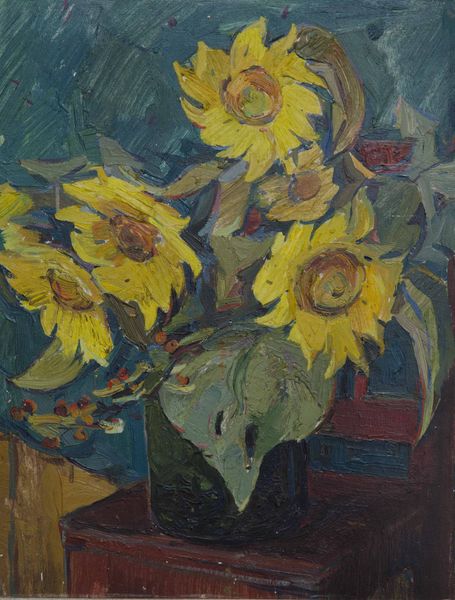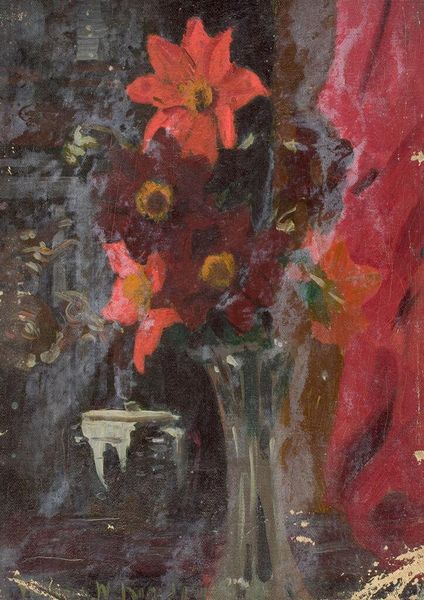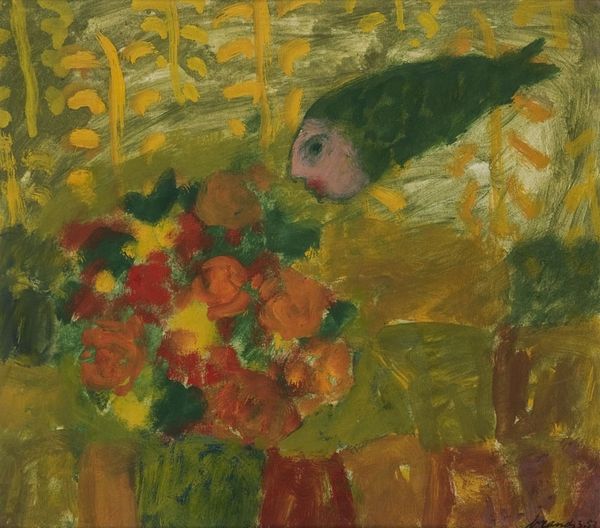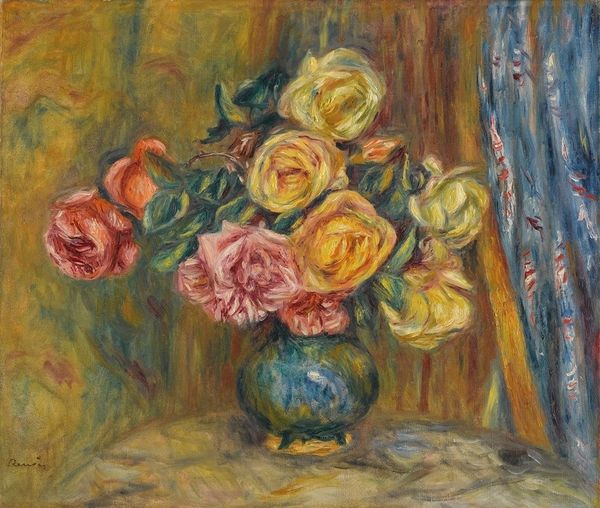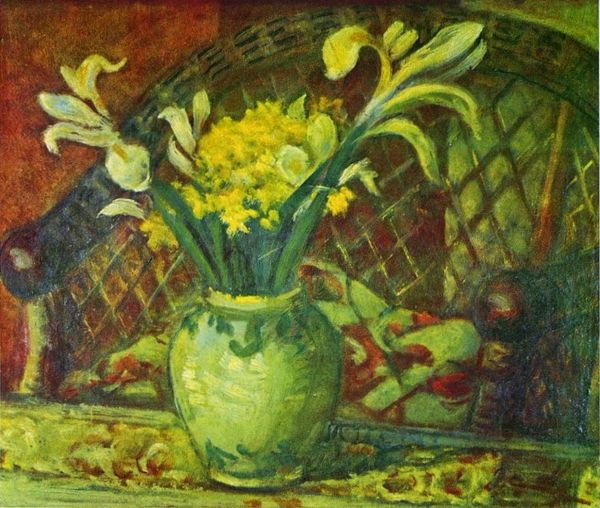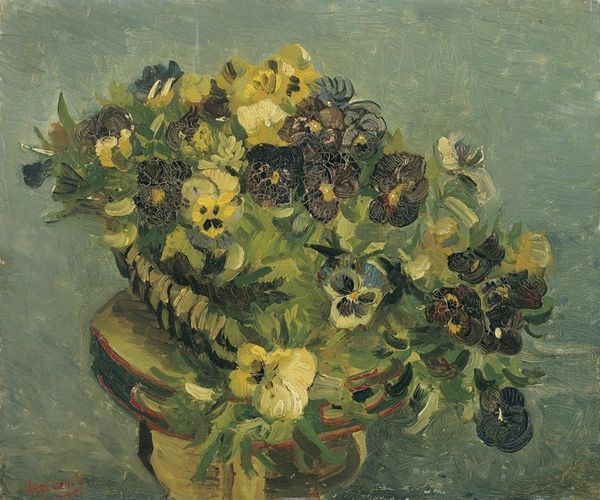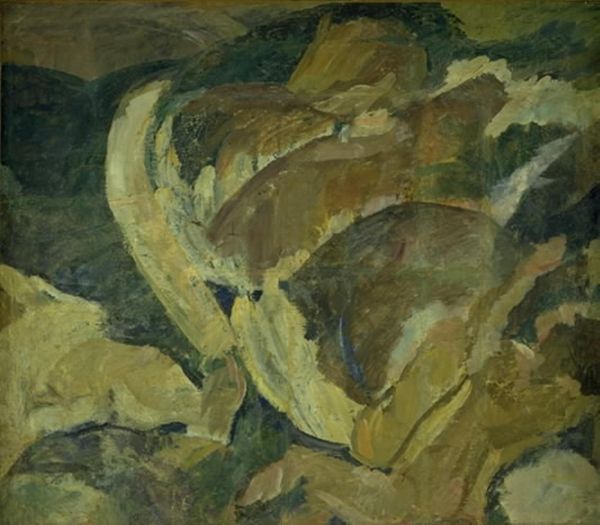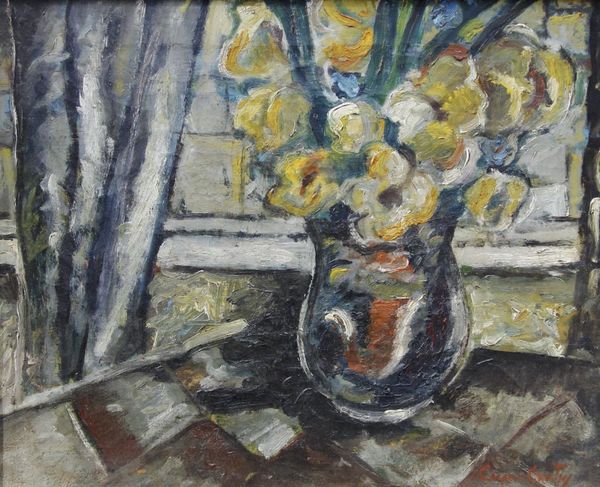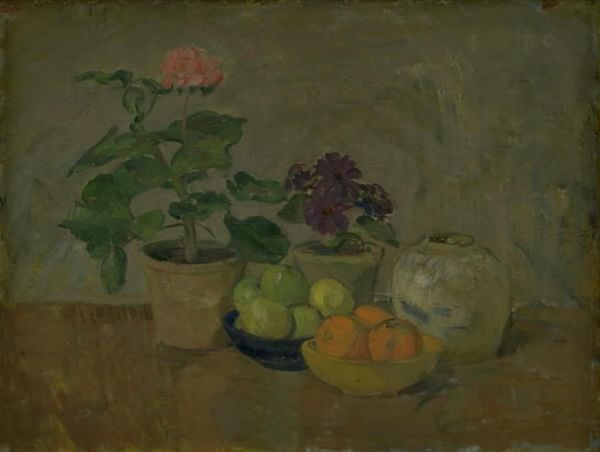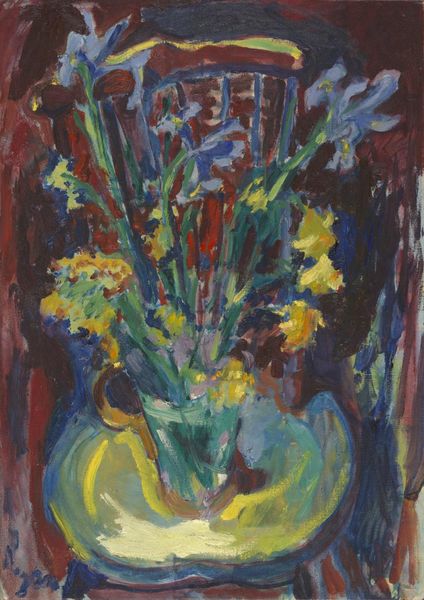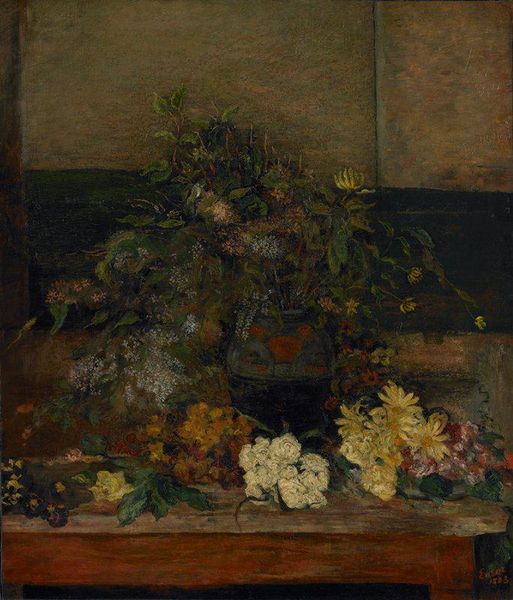
Dimensions: 55.5 cm (height) x 66.5 cm (width) (Netto)
Editor: We’re looking at “Parrot Tulips” by Karl Isakson, painted in 1909. It’s an oil on canvas, and something about the muted colors and drooping flowers gives it such a melancholic feel. What do you see in this piece? Curator: Beyond the visible beauty, I find a symbolic dialogue between life and its inevitable decline. The Parrot Tulip itself is a symbol, cultivated for its flamboyant, almost unnatural appearance, it represents the human desire to control and alter nature. Yet, here they are, drooping, fading. Editor: That's interesting, I hadn’t considered the contrast between the vibrant colours of the tulips and their dejected stance. Is that intentional on Isakson’s part? Curator: The sagging blossoms carry cultural weight, appearing in *Vanitas* paintings, symbolizing the transience of life, beauty, and earthly pleasures. Look at how the vibrant reds are already becoming tinged with decay. The clear vase also evokes themes of transparency versus the obscured and unknown of mortality. Editor: So, it’s a reminder that even something as beautiful and unique as a Parrot Tulip is destined to fade? Curator: Precisely. This tension mirrors larger existential questions; do we preserve or appreciate in its ephemerality? I’d posit that Isakson is more preoccupied with the emotional reality of temporality and memory. The painting, with its subdued hues, makes that melancholy and nostalgia palpable, don't you think? Editor: I do! Considering that, the painting is really thought-provoking and not just a still life. Thanks for pointing out the cultural and symbolic background! Curator: My pleasure! These symbols grant artwork layers, prompting richer appreciation.
Comments
No comments
Be the first to comment and join the conversation on the ultimate creative platform.
